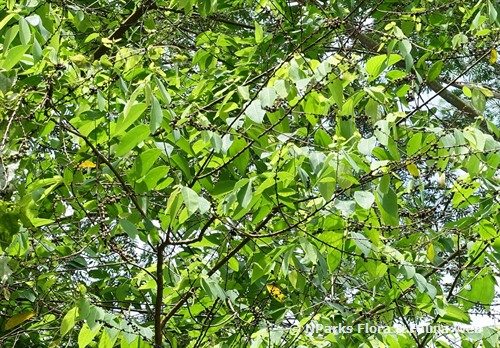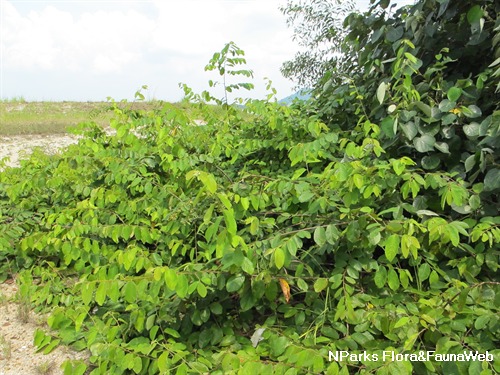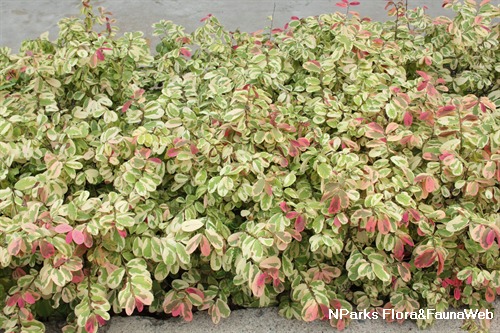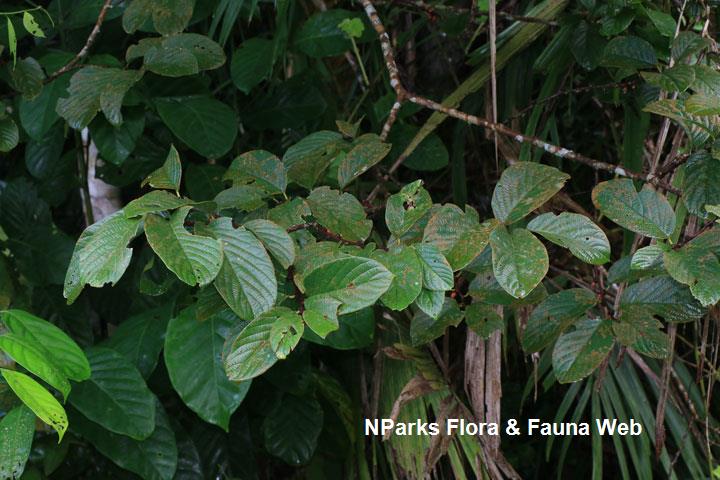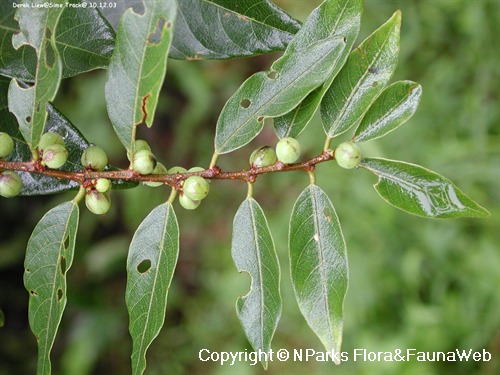
Back
Bridelia tomentosa Blume
| Family Name: | Phyllanthaceae |
| Common Name: | Kenidai, Kernong, Kernam, 土蜜树 |
Name
Classifications and Characteristics
| Plant Division | Angiosperms (Flowering Seed Plants) (Dicotyledon) |
|---|---|
| Plant Growth Form | Tree, Shrub |
| Lifespan (in Singapore) | Perennial |
| Mode of Nutrition | Autotrophic |
Biogeography
| Native Distribution | Malaysia to N. Australia |
|---|---|
| Native Habitat | Terrestrial (Primary Rainforest, Secondary Rainforest) |
| Preferred Climate Zone | Tropical |
| Local Conservation Status | Native to Singapore (Least Concern (LC)) |
Description and Ethnobotany
| Foliage | Leaves are often rather small; petiole terete, glabrous(smooth, without hair) to tomentose; upper surface glabrous to scattered appressed hairs, dark green, lower surface glabrous to tomentose, pubescent on main nerves, green to whitish green. |
|---|---|
| Stems | Branches are very slender, often long and whip like, spreading or drooping, glabrous to tomentose, with scattered lenticels, old branches sometimes thorny. |
| Ethnobotanical Uses | Edible Plant Parts : Edible Fruits Medicinal: Scientific Evidence of Medicinal Properties It is important to note that some therapeutic effects from traditional medicinal uses of plants are not currently supported or verified by scientific research. Others: The ripe fruits are edible and eaten by the rural eastern Indian community (i.e.Orissa Jharkand state) <1> |
Fauna, Pollination and Dispersal
| Fauna Pollination Dispersal Associated Fauna | Butterfly-Attracting |
|---|
Plant Care and Propagation
| Light Preference | Full Sun |
|---|---|
| Water Preference | Moderate Water |
| Plant Growth Rate | Moderate |
| Rootzone Tolerance | Drought Tolerant |
Foliar
| Foliage Retention | Evergreen |
|---|---|
| Mature Foliage Colour(s) | Green |
| Mature Foliage Texture(s) | Papery |
| Foliar Type | Simple / Unifoliate |
| Foliar Arrangement Along Stem | Alternate |
| Foliar Shape(s) | Non-Palm Foliage (Lanceolate) |
| Foliar Margin | Entire |
| Foliar Apex - Tip | Acute, Acuminate |
| Foliar Base | Cuneate, Rounded / Obtuse |
| Leaf Area Index (LAI) for Green Plot Ratio | 3.0 (Tree - Intermediate Canopy) |
Non - Foliar and Storage
| Trunk Type (Non Palm) | Woody |
|---|---|
| Mature Bark Texture Remarks | Smooth or tearing off in scales or long stripes, inner bark pink. |
Floral (Angiosperm)
| Flower Colour(s) | Green - Light Green |
|---|---|
| Flower Grouping | Cluster / Inflorescence |
| Flowering Period | Free-Flowering |
Fruit, Seed and Spore
| Mature Fruit Colour(s) | Green - Bluish Green |
|---|---|
| Mature Seed Colour(s) | Brown, Red |
| Plant Sexuality (non-Angiosperm) | Monoecious, Dioecious |
References
| References | <1> Mahapatra, A.K., Mishra, S., Basak, U.C. & Panda, P.C. (2012). Nutrients Analysis of some selected wild edible fruits of deciduous forests of India: an explorative study towards non-conventional bio-nutrition. Advance Journal of Food Science and Technology 4(1):15-21. <2> Mohammad, A.R., et. al. (2023). Evaluation of Antioxidant, cytotoxic and hepato-protective effect of Bridelia tomentosa fruit extract. Tropical Journal of Natural Product Research 7(12): 5453-5459. <3> Krishnan, K.S. (1994). The useful plants of India, 3rd reprint. New Delhi: Publication & Information Directorate, CSIR. pp.87. |
|---|
Image Repository
Others
| Master ID | 1463 |
|---|---|
| Species ID | 2756 |
| Flora Disclaimer | The information in this website has been compiled from reliable sources, such as reference works on medicinal plants. It is not a substitute for medical advice or treatment and NParks does not purport to provide any medical advice. Readers should always consult his/her physician before using or consuming a plant for medicinal purposes. |

